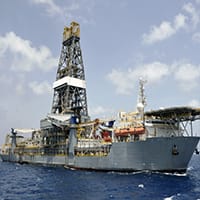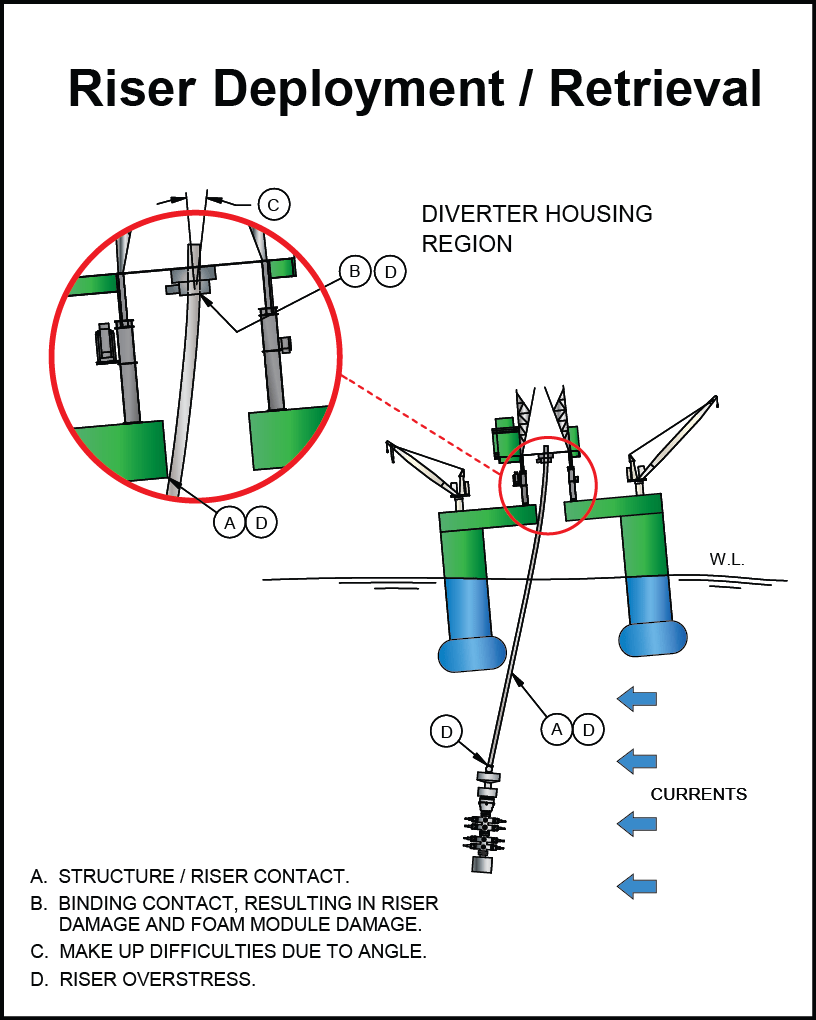Offshore Drilling


About Our Offshore Drilling Analysis Testing
Offshore drilling has become increasingly more challenging as the oil & gas industry continues to explore in to deeper water depths and harsher environments. As pioneers in this area, Stress Engineering Services’ extensive experience in the design and analysis of drilling risers, well conductors, and completion / workover risers provides us with a sound understanding of the problems and demands involved, and the ability to effectively solve them.
We serve operators, drilling contractors, and equipment vendors with our wide range of global analysis, system optimization, and component design services including weak point analysis, drift-off / drive-off analysis, riser recoil analysis, operating envelopes, wave fatigue analysis, vortex-induced vibration analysis, seismic analysis, and hang-off analysis.
Operability Analysis
Using a global analysis approach we can confirm operating envelopes defined by top tension, allowable rig offsets, flex joint angles, and maximum riser stresses for a given riser configuration, environment, water depth, and mud weight.
Performance Analysis
We assess the global performance of drilling risers to optimize the use of components such as flex joints, gas handlers or surface BOP’s, telescopic joints, keel joints, fill valves, and suspension joints for storm hang-off or transit. Similar analytical approaches can be used to optimize tensioner systems for new-builds and upgrades.
Riser Recoil Analysis
With our proprietary STARR software, we can determine operating limits such as heave, tension, and stroke imposed by riser recoil requirements. We can also analyze rig-specific tensioner configurations, recoil control systems, riser stack-up, tension settings, mud weight, heave, and stroke to limit impact force, avoid rope slack, and lift the LMRP clear of the lower BOP stack.
Drift-off / Drive-off Analysis
We can determine maximum loads and stresses on riser and rig as it is pushed by wind and/or surface current with a suspended, disconnected riser. We can also perform Time Domain Drive-off / Drift-off Analysis of vessel offset limits to establish operational green/yellow/red zones for emergency disconnect planning.
Hang-off Analysis
We can optimize riser configuration to eliminate dangerous potential problems in both hard and soft hang-off scenarios. Results of the analysis will estimate the possibility of axial compression during severe down-heaves; determine possible near-resonance riser axial response for long suspended risers; calculate maximum bottom package vertical motion, as well as maximum heave-magnified loads and stresses in the riser assembly.
Riser Deployment/Retrieval Analysis
We can establish maximum current profiles and sea states for safely running or retrieving riser, casing, or trees/manifolds, and maximum sea states for safely landing BOP. This can include analyzing the effects of drifting with surface current to achieve operational success in high current profiles.
Weak Point Analysis
We can identify the “weak link” in a riser, wellhead, or riser tensioner system when a DP vessel drifts off station, combined with failure to achieve emergency disconnect. This service includes modeling of tensioners, riser, wellhead, structural casing, and near surface soil properties.
Vortex-induced Vibration (VIV) Analysis
We can identify potential riser and/or conductor casing fatigue problems in high currents during deployment, or while connected. We can also evaluate the effectiveness of VIV suppression devices. Going beyond RP16Q when necessary, we can develop Advanced Design and Operational Strategies that combine the results of VIV, Weak Point, Deployment, and Riser Recoil Analyses.



